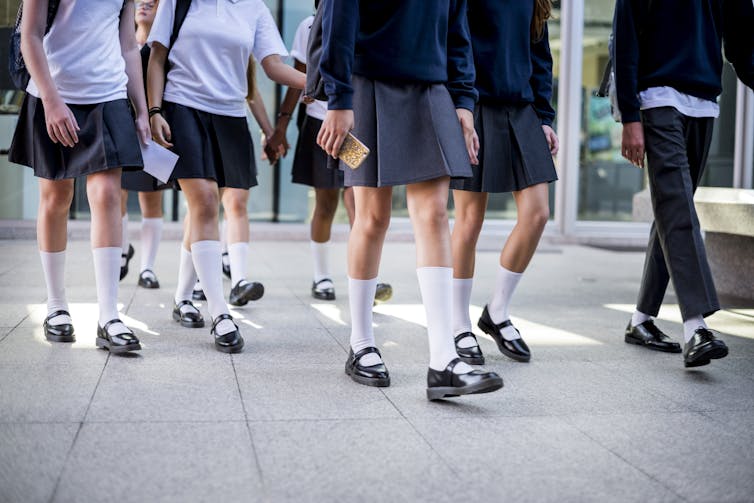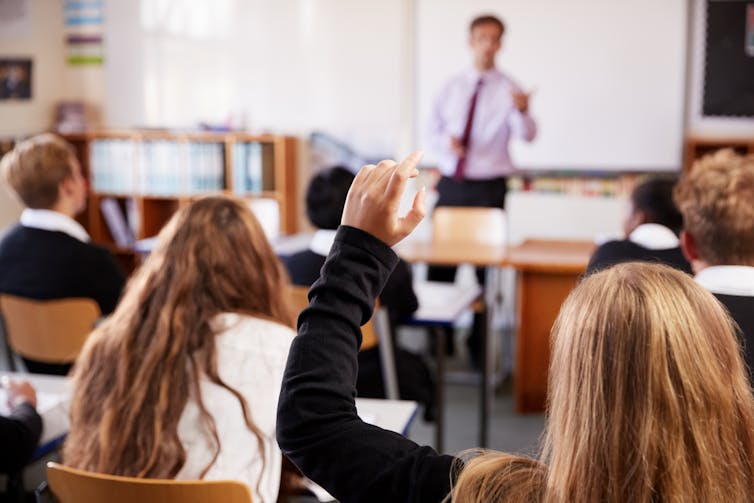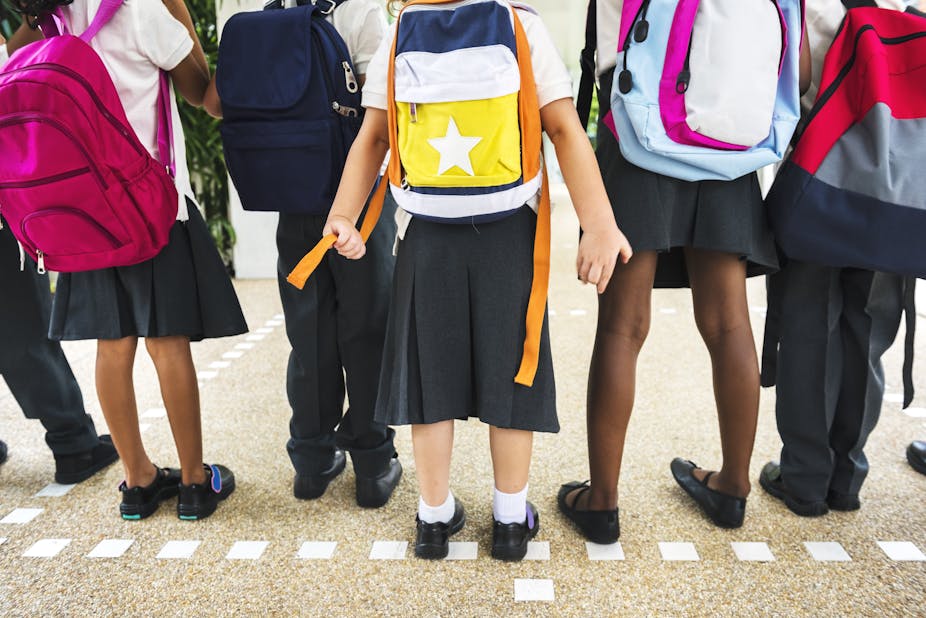New pencil cases, shoes, bags and coats might line the classrooms, but for many parents, the additional financial strain associated with sending their teenagers back to school can be significant.
According to reports by The Children’s Society, families with children at secondary school pay, on average, more than £300 per child every year in school uniform costs. A 2015 government report found a fifth of low income parents have suffered financial hardship from having to purchase school uniforms. This figure was lower where parents were able to purchase the uniform from anywhere (such as supermarkets) – rather than specific school uniform shops.
But most schools require pupils to wear a uniform branded with the school emblem rather than generic pieces – and this can further increase the cost. This is despite the government pledging to lower school uniform costs.
The right brands
But additional school paraphernalia is not as strictly controlled by schools or the government. And many teenagers want a long list of branded items – from shoes, bags and mobile phones to the crisps in their lunchbox.
Consumerism is entering the playground and placing further pressure on already stretched parents. Research shows consumerism is an intrinsic part of human nature. And many teenagers perceive possessions as symbols of their identity – making judgements about their peers based on the brands they choose.

The same research has also shown that consumerism acts as a coping mechanism in situations where an individual experiences feelings of anxiety, uncertainty and insecurity. The teenage years are rife with physical and emotional changes, which amplify these feelings. And brands can allow teenagers to forge their identity at a turbulent time when they are transitioning into adulthood and establishing who they are.
Material happiness
Some teenagers associate consuming the “right” brands with achieving happiness and peer approval. But research shows that consumerism negatively correlates to overall life satisfaction. In this way, then, the need for constant peer comparison and approval can negatively impact teenager well-being – particularly self-esteem.
It has been suggested that a societal shift among younger generations towards extrinsic goals – which relate to the need to acquire material possessions and peer acceptance over intrinsic goals that link to personal development and self acceptance – have led to an increase in consumerism.
This creates a situation where teenagers place greater emphasis on money, possessions and status over personal growth and relationships. As well as pressure for teenagers to consume and gain peer acceptance. This has been linked to the rise in teenager anxiety, particularly among girls.
Vicious cycle
My research finds members of younger generations struggle to escape consumerism. Many feel an inherent need to consume the “right” brands to gain a sense of belonging to a particular peer group. The “right” brand is considered to be a brand that allows the teenager to portray a desirable image of who they are or who they aspire to be to the world.
Many adults I spoke to as part of my research even vividly recalled instances in their teenage years when they had been bullied at school for being associated with the wrong brand. This included having a brand of mobile phone their peers considered to be cheap, and wearing unbranded trainers for PE. These experiences led to a greater emphasis being placed on certain brands in the transition from teenager to adult to avoid negative feelings associated with the “wrong” brand.

Social media can also exacerbate this need to consume and have the “right” brands – with many peers and online influencers posting glossier versions (or even complete fabrications) of reality. Social media also allows for constant social comparison. This can increase the need for teenagers to keep up with their peers to avoid scrutiny – which creates a vicious cycle. This makes it difficult for teenagers to step back and differentiate the idealised self image their peers portray online from reality, and so they feel pressure to follow suit.
School pressures
In the UK, more than 4m children live in poverty. And research shows the impact of consumerism on teenagers is greater for those from lower income families.
These teenagers can be more susceptible to peer influence. They may use brands to emulate an image of a richer counterpart to avoid being teased for being poor. This helps them to achieve and maintain social acceptance, while reducing feelings of personal inadequacy and anxiety.
It’s clear that at school having a particular brand can mean the difference between popularity and rejection. To tackle this, the government should look to place a cap on the amount schools are able to charge for branded uniforms. Schools could also help by ensuring items such as school bags and shoes are generic and unbranded to help reduce some of the pressure on parents and teenagers alike.

